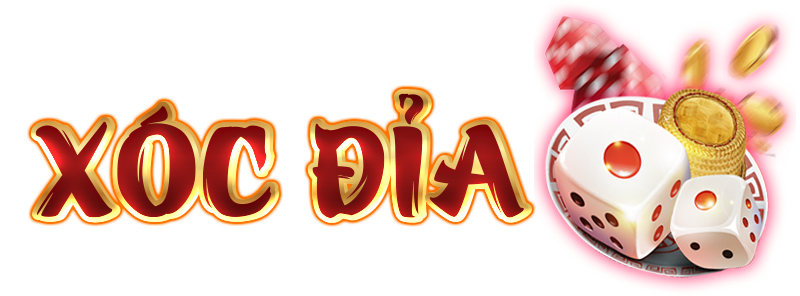Chính Sách Bảo Mật Tại Xóc Đĩa Cloud Chi Tiết Nhất 2025
Chính sách bảo mật của một cổng game xóc đĩa trực tuyến luôn là yếu tố quan trọng, bất cứ thành viên nào khi tham gia cũng cần phải nắm chắc. Đặc biệt hơn tại sân chơi xóc đĩa online Cloud, các nội dung luôn được “nhấn mạnh”. Từ đó tạo nên hệ thống giải trí an toàn và lành mạnh cho mọi thành viên.
Mục tiêu của chính sách bảo mật
Chính sách bảo mật tại cổng game xóc đĩa uy tín được tạo ra nhằm các mục đích nhất định. Nếu bạn là người chơi mới hãy theo dõi thêm dưới đây để biết lý do của chính sách này là gì nhé:
Tạo sân chơi xóc đĩa online uy tín và minh bạch
Mục tiêu chính của chính sách bảo mật đó là tạo nên một sân chơi xóc đĩa đổi thưởng uy tín và minh bạch nhất. Khi chơi game trong môi trường an toàn, các thành viên hoàn toàn có thể yên tâm với trải nghiệm của mình. Từ đó “chú tâm” hơn trong từng màn cược và nhận thưởng lớn nhất.
Cam kết đồng hành cùng cộng đồng người yêu thích xóc đĩa trực tuyến
Chính sách về bảo mật cũng được tạo ra nhằm mục đích đồng hành, bảo vệ quyền lợi của cộng đồng người chơi yêu thích xóc đĩa trực tuyến trên thị trường hiện nay. Được biết, cộng đồng các tay chơi game xóc đĩa online ngày càng phát triển và số lượng không ngừng tăng cao, chứng tỏ sức hút đặc biệt của siêu phẩm này.

Quy trình thu thập thông tin người chơi
Trong chính sách bảo mật, các thành viên sẽ được quy định rõ ràng về việc thu thập thông tin hay dữ liệu cá nhân cơ bản. Bạn cần phải nắm rõ nội dung liên quan đến các thông tin của mình trên hệ thống. Cụ thể như sau:
Dữ liệu cá nhân cơ bản
Dữ liệu cá nhân cơ bản của người dùng sẽ được thu thập bằng nhiều hình thức khác nhau trong quá trình tham gia cá cược trực tuyến tại đây. Mục đích chính của việc thu thập dữ liệu người chơi đều là phục vụ cho việc quản lý và xác minh thành viên trên hệ thống, đảm bảo tính an toàn và minh bạch tuyệt đối.
Hiện nay, cổng game đang tiến hành thu thập dữ liệu cá nhân cơ bản của người dùng thông qua những cách sau. Xem thêm:
- Biểu mẫu đăng ký – đăng nhập: Thông tin sẽ được thu thập thông qua các loại biểu mẫu như khi tạo lập tài khoản mới hay đăng nhập game chính thức. Những thông tin thường được thu thập điển hình như họ tên chính thức, số điện thoại, độ tuổi, địa chỉ email chính,…
- Giao dịch nạp – rút: Để thực hiện giao dịch nạp rút, người chơi cũng cần cung cấp thông tin tương ứng trên biểu mẫu được yêu cầu theo chính sách bảo mật. Những thông tin cơ bản được thu thập từ form giao dịch là số tài khoản, tên ngân hàng giao dịch, số tiền nạp – rút, nội dung giao dịch, mã OTP.
- Các loại form khác: Trong quá trình chơi game tại sân chơi, các thành viên cũng thường xuyên nhận được yêu cầu cung cấp ý kiến, đóng góp để hoàn thiện hệ thống. Đây cũng được xem là một trong những hình thức thu thập thông tin người dùng tại Cloud – xóc đĩa online.

Dữ liệu hành vi trực tuyến
Bên cạnh việc thu thập thông tin từ các loại biểu mẫu như kể trên, hệ thống cũng tiến hành phân tích dữ liệu hành vi trực tuyến của các thành viên, trong quá trình chơi game của họ. Theo chính sách bảo mật, việc này được thực hiện một cách rõ ràng và minh bạch, chỉ thu thập hành vi trong vòng hoạt động của sân chơi.
Khi việc thu thập dữ liệu hành vi trực tuyến được thực hiện đầy đủ. Cổng game sẽ được vận hành một cách hiệu quả, đảm bảo được hệ thống an toàn và các quyền lợi của thành viên cũng trọn vẹn nhất.
Các nhà cái xóc đĩa liên kết thu thập dữ liệu như thế nào?
Các nhà cái xóc đĩa đổi thưởng online cũng như là những nền tảng khác cũng đã có sự liên kết để thu thập các dữ liệu một cách hiệu quả nhất. Thông thường, họ sẽ sử dụng các phần mềm để có thể thu thập dữ liệu hay phân tích hành vi người dùng rõ ràng, chi tiết, hỗ trợ cho việc quản lý tốt nhất.
Đồng thời, việc liên kết cũng diễn ra dưới các đường dẫn hay thông báo từ website chính khi người chơi truy cập. Hoặc là dưới hình thức cung cấp game từ nhà phát hành uy tín, khi đó, hoạt động của các tay chơi sẽ được đảm bảo luôn trong tầm kiểm soát. Một vài cách thu thập dữ liệu liên kết điển hình như:
- Phân tích hành vi người dùng: Việc phân tích hành vi người dùng hay tương tác trên màn hình chính là một nội dung trong chính sách bảo mật, được thực hiện thường xuyên.
- Phần mềm xóc đĩa tương ứng: Nhờ công nghệ hiện đại, các phần mềm xóc đĩa cũng đã được áp dụng để thu thập dữ liệu hiệu quả hơn.
- Dữ liệu từ các giao dịch: Như đã đề cập, thông qua hoạt động nạp rút của thành viên, nhà cái cũng có được dữ liệu cần cho hệ thống.
- Giám sát và bảo mật: Quá trình giám sát và bảo mật là điểm “mấu chốt” để tạo nên sân chơi lành mạnh và an toàn.

Lời kết
Trên đây là toàn bộ thông tin về chính sách bảo mật của nhà cái xóc đĩa trực tuyến Cloud. Hãy theo dõi ngay để biết rõ hơn về nội dung quan trọng này, từ đó chơi game an toàn nhất.

